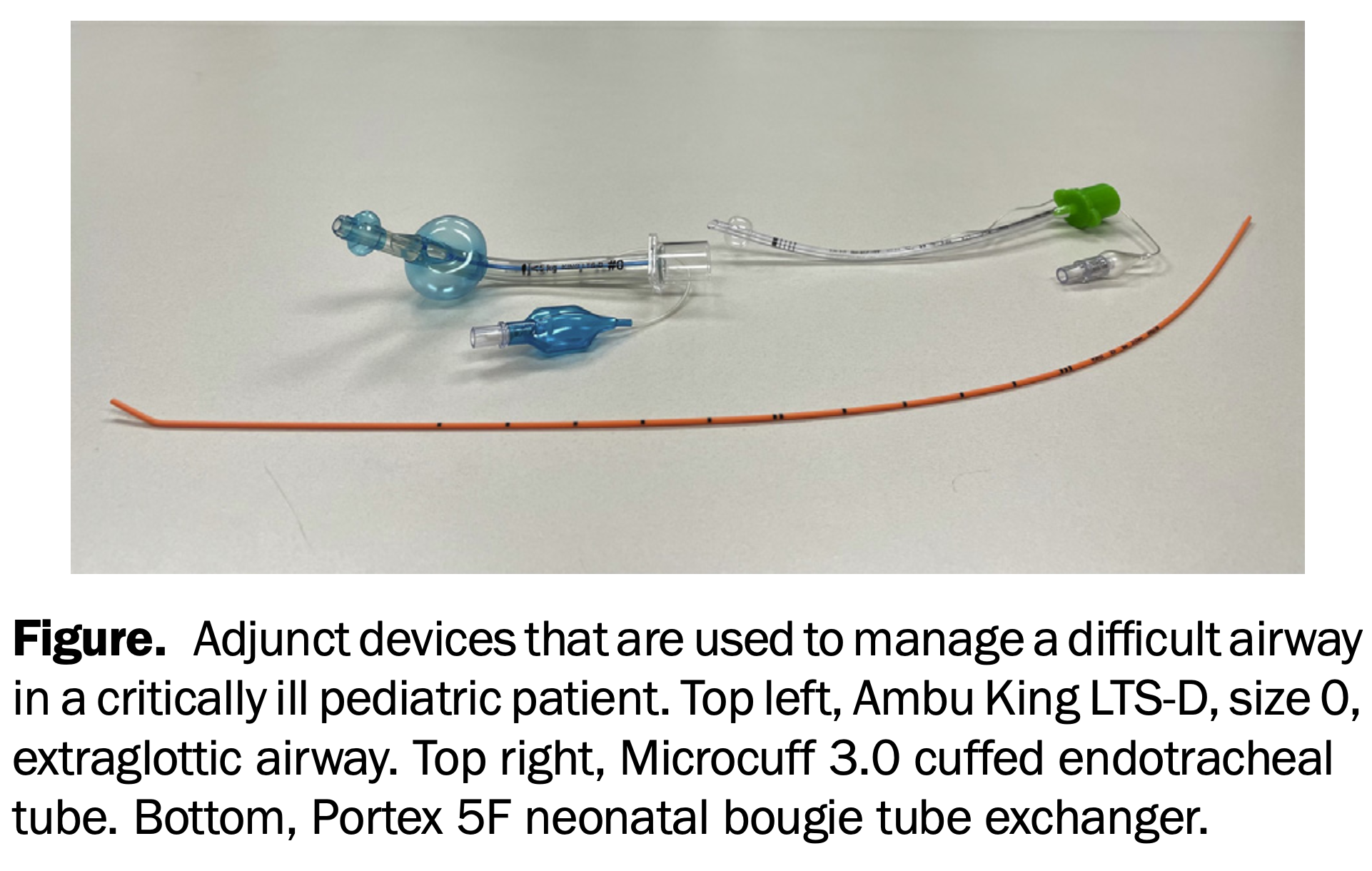Written by Andy Hogan
Spoon Feed
Extraglottic airways, pediatric bougies, and Microcuff endotracheal tubes are potentially underutilized for difficult pediatric airways.
Why does this matter?
Pediatric intubations are low-frequency, high-impact events for most emergency physicians. Knowledge of available airway adjuncts may assist in managing difficult pediatric airway cases.
Baby’s First Airway Adjunct
Literature on the use of pediatric adjuncts in emergency settings is sparse. This report describes 3 adjunctive devices used during airway management in a very small (3 kg) 9-month-old with Trisomy 18 (small mouth, micrognathia) during an in-hospital cardiac arrest. The patient was intubated 4 times before tube placement was confirmed.

From cited article
Extraglottic Airway (EGA)
-
The critical care physician rapidly placed an EGA (King LTS-D), quickly achieving effective oxygenation and ventilation.
-
Early supraglottic airway placement and replacement between intubation attempts substantially decreased the patient’s apneic time.
Neonatal Bougie
-
After each intubation attempt, direct visualization of tube passage through the cords, chest rise, and bilateral auscultation suggested correct placement, but no capnography waveform was detected.
-
A neonatal bougie (5 Fr) was used as a tube exchanger to facilitate the final intubation with a Microcuff ETT.
Microcuff ETT
-
The authors postulate that significant air leak along with small patient tidal volumes explained their inability to detect a CO2 waveform using traditional cuffed and uncuffed ETTs.
-
Microcuff ETTs use polyurethane (vs. traditional PVC) balloons that form smaller folds when inflated leading to less air leak.
Take Home
-
Some clinicians may not realize that EGAs come in sizes small enough for <5 kg patients and may not consider this intervention early in difficult pediatric airways.
-
These intubators did not use the bougie for initial laryngoscopy. Other reports have described pneumothorax development after use of neonatal bougies (only 1.66 mm diameter).
-
Overall, this case suggests pediatric/neonatal adjuncts are potentially underutilized and deserve further study.
Source
Adjunct Devices for the Pediatric Difficult Airway: A Case Report. Ann Emerg Med. 2021 Dec 21;S0196-0644(21)01465-7. doi: 10.1016/j.annemergmed.2021.11.022. Online ahead of print.










